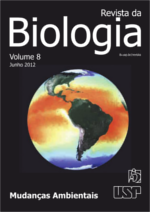Microflora, skin secretions and microclimate: implications for amphibians
DOI:
https://doi.org/10.7594/revbio.08.08Keywords:
Amphibians, microclimate, cutaneous microflora, skin secretions.Abstract
The meaning of climate change for amphibians, in synergy with other anthropogenic impacts, is linked to possible changes in the microclimate in the habitats occupied. In this context, the events of epidemics are highlighted, since it is likely that changes in the environment contribute to the increasing spread of diseases. The first protection of amphibians, against several diseases, is the skin with is associate secretions and microbiota, all of them essential because many infectious agents operate through the skin. The main barriers are the resident microflora and skin secretions, which have an antibiotic effect against pathogenic organisms known. The environment modulates the inherent characteristics of these components and at the same time, changes in climatic patterns may dictate significant changes in these components and, consequently, make amphibians more susceptible to pathogens.Downloads
Download data is not yet available.
Downloads
Published
2018-04-23
Issue
Section
Revisão
License
We ensure that our journal does not retain any copyright and that these are exclusive of the author(s) of the text. In that sense, we intend to break any restrictions to the published material and to achieve more intensely our goal of communicating science.
How to Cite
Assis, A. B. de. (2018). Microflora, skin secretions and microclimate: implications for amphibians. Revista Da Biologia, 8(1), 45-48. https://doi.org/10.7594/revbio.08.08






